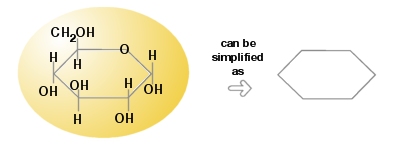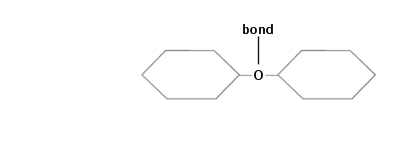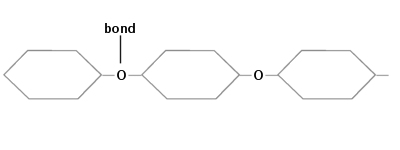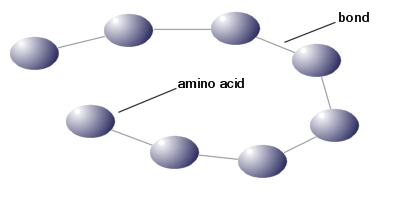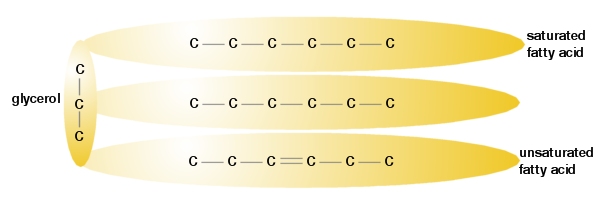Chemistry
The human digestion process is centred around the chemical action on food as it passes through the body; as various chemicals act on the food matter, it is broken down in stages such that the body can make use of the resulting products. These molecules are: carbohydrates, proteins and lipids.
Carbohydrates
Carbohydrates occur in two forms: simple (so called sugary) and complex (so called starchy) carbohydrates. Simple carbohydrates are quickly broken down by the body's digestive system to obtain energy, whereas complex carbohydrates are broken down over a longer period of time. Complex carbohydrates are found in starchy foods, such as pasta, bread, noodles etc.
Glucose is an example of a monosaccharide - a carbohydrate comprised of one saccharide molecule - and has a structure as depicted in Fig. i above. The body turns simple carbohydrates into energy rapidly and uses them as required as demanded by the cells in the body. Any glucose that is not used immediately is subsequently turned into glycogen, the body's natural store of energy in this form. Any glycogen that cannot be stored in the liver and cells within the muscles is in turn converted to fat.
Carbohydrates comprised of two saccharide molecules - disaccharides - such as sucrose and maltose, are still broken down relatively quickly but require more effort because the bond between the molecules has to be broken.
Many saccharide molecules bonded together are called polysaccharides. Examples of these are starch, cellulose (only found in plants) and glycogen, the latter of which is a store of energy as mentioned above.
In general, simple carbohydrates are absorbed rapidly by the body and provide energy very quickly, whereas complex carbohydrates require longer to be absorbed and therefore release energy over a longer period of time.
Proteins
Proteins are collections of amino acids that are bonded together in chains. The body generates 11 non-essential amino acids and nine essential amino acids are obtained from food, such as meat, fish, dairy produce and pulses.
Protein is important for the body to build, maintain and restore tissues and plays a part in the synthesis of haemoglobin.
Proteins
Lipids are fats (solid) or oils (liquid) at room temperature. They all contain only carbon, hydrogen and oxygen and are used biologically as a concentrated energy storage compound. Lipids are all characterised by being water insoluble - biologically quite unusual.
Biological lipids are glycerides (often triglycerides) - compounds of fatty acids and glycerol. These are a diverse group but in dietary terms can be considered as triglycerides and cholesterol. Other lipids relevant to our diet are found amongst the vitamins, pigments and flavours.
Natural oils are all mixed triglycerides i.e. each molecule contains more than one type of fatty acid. They all contain some proportion of unsaturated fatty acid.
Essential fatty acids
These are polyunsaturated fatty acids that cannot be synthesised by the body and thus must be supplied in the diet. They are required in only small amounts and need only form 1-2% of the total energy intake. Deficiency of essential fatty acids is extremely rare.
